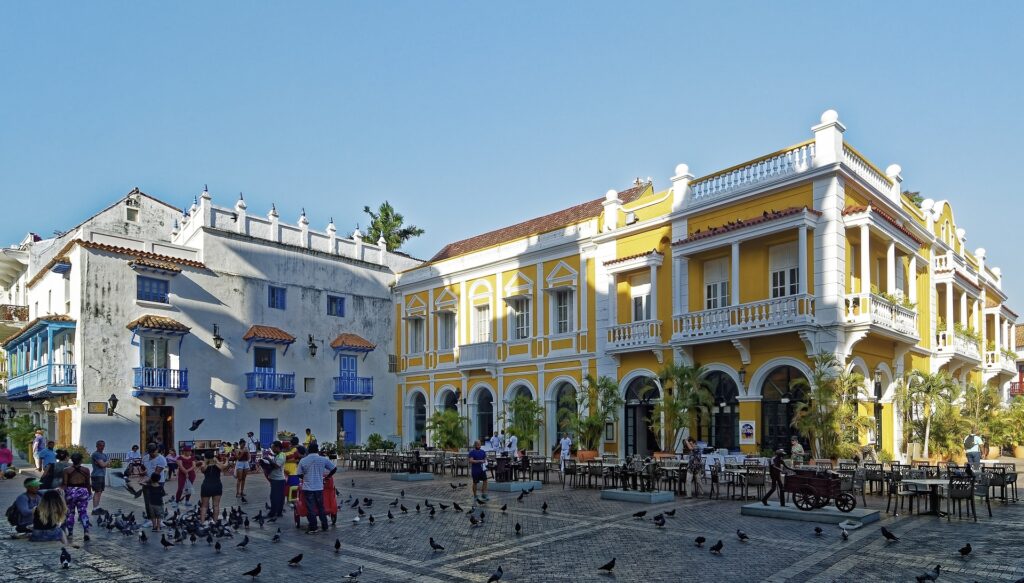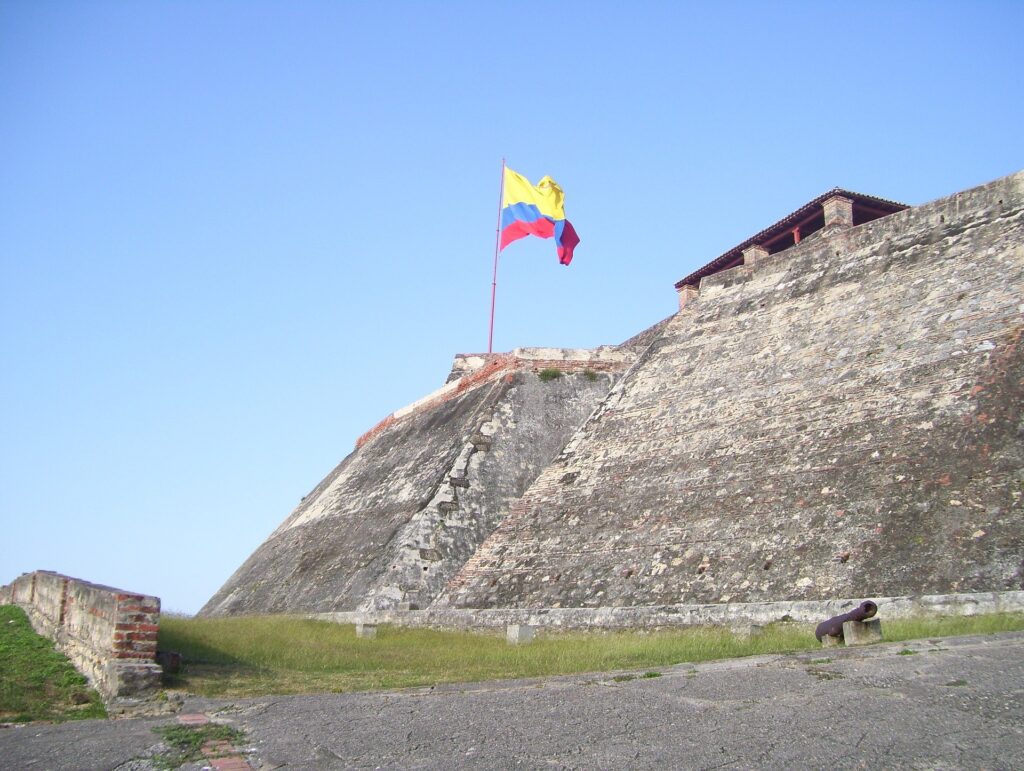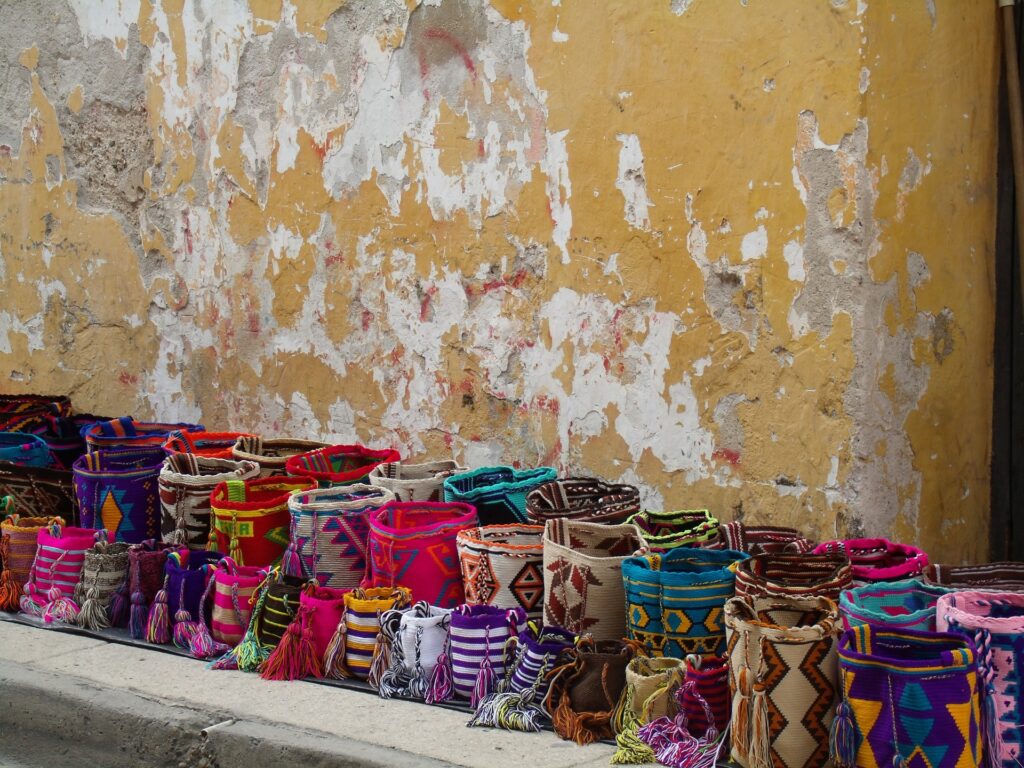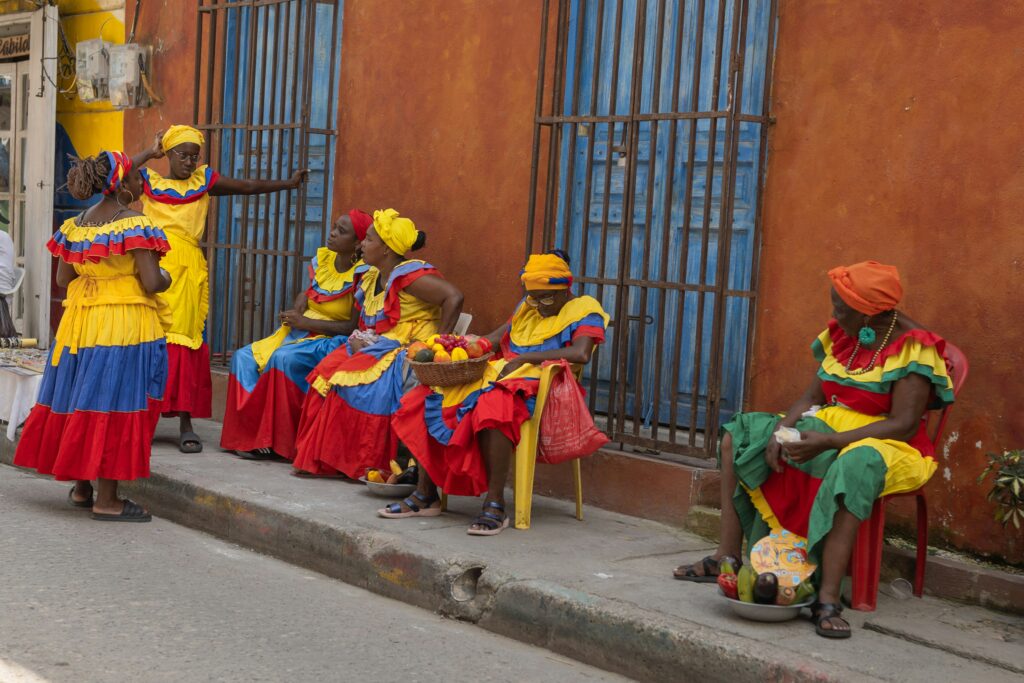Nestled on the northern coast of Colombia, framed by the shimmering waters of the Caribbean Sea, Cartagena de Indias is a city that appears almost like an elaborate painting, blending the vivid hues of its colonial past with the vibrant pulse of its contemporary culture. This UNESCO World Heritage Site is a captivating fusion of history, architecture, and tradition, harmoniously coexisting in a city that has been a significant player in the historical narrative of Latin America.

Colonial Architecture: A Timeless Elegance
Cartagena is renowned for its remarkably well-preserved colonial architecture, with structures that echo the grandeur and opulence of the Spanish Empire. As one meanders through the labyrinthine streets of the walled city, known as “Ciudad Amurallada,” it is as if time has stood still. The cobblestone streets, lined with majestic colonial mansions, radiant in pastel hues, adorned with wooden balconies draped in vibrant bougainvillaea, render a sense of timeless elegance and romance.

The Walls of Cartagena
The imposing fortifications that envelop the old city are among Cartagena’s most distinctive features. These walls, referred to as “las murallas,” were constructed over two centuries, beginning in the late 16th century, to protect the city from pirate attacks and military invasions. This endeavor was largely orchestrated by the Spanish military engineer, Bautista Antonelli, and later expanded by other engineers.
More:Read about on Explore Cabo Polonio
Strolling atop these ancient walls, one is afforded panoramic views of both the historic cityscape and the azure Caribbean Sea. The Baluarte de Santo Domingo, one of the numerous bastions along the walls, now hosts a vibrant scene with cafes and atmospheric evening hangouts, offering visitors a chance to imbibe the essence of Cartagena’s maritime charm.
The Splendor of Colonial Homes
Cartagena’s colonial homes are masterpieces of 16th and 17th-century Spanish colonial architecture. These residences often feature large wooden doors, ornate ironwork, and interior courtyards resplendent with tropical flora and fountains, reflecting the Andalusian influence on the city’s architectural style. The Casa de Marqués Valdehoyos and the Casa del Conde de Pestagua are prime examples of private residences turned public monuments that showcase the architectural grandeur of Cartagena’s colonial era.
Churches and Religious Edifices
The city’s ecclesiastical architecture is equally captivating, with churches that stand as monuments to the Spanish conquest and evangelization. The Cathedral of Cartagena, or the Cathedral Basilica of St. Catherine of Alexandria, is a particularly stunning example. Originally begun in 1577 and completed in 1612, this cathedral combines Romanesque and Baroque architectural elements. Its imposing bell tower is a defining feature of the city’s skyline.
The Church of San Pedro Claver, named after the Jesuit priest who dedicated his life to improving the lives of enslaved Africans in Cartagena, is another remarkable edifice. The church’s history and its adjoining monastery, now a museum, offer deep insights into the social and religious fabric of colonial Cartagena.
A Brief History of Cartagena
Cartagena’s history is as rich and multifaceted as its architecture. Founded in 1533 by the Spanish conqueror Pedro de Heredia, the city swiftly rose to prominence as one of the wealthiest ports in the New World due to its strategic position and its role as a key node in the transatlantic trade routes.
The Gold and Slave Trade
Cartagena was a critical transit point for gold and other riches plundered from the indigenous civilizations of South America en route to Spain. However, this wealth also made the city a ripe target for pirates and privateers, including the infamous Sir Francis Drake, who besieged and ransomed the city in 1586.

Equally significant, though darkly so, was Cartagena’s role in the transatlantic slave trade. The city became a major hub for the importation of enslaved Africans, who were traded under brutal conditions to work in plantations and mines throughout the Spanish colonies. This tragic history is poignantly remembered at sites such as the Palacio de la Inquisición, where evidence of the Inquisition’s proceedings and the era’s harsh penal practices is on display.
The Struggle for Independence
Cartagena’s strategic importance also made it a focal point in the fight for independence from Spanish rule. The city declared its independence on November 11, 1811, becoming one of the first cities in Colombia to do so. This act of defiance led to a brutal reprisal by Spanish forces, culminating in a lengthy siege that left the city severely battered.
Despite this, Cartagena’s spirit remained unbroken. The city’s final liberation came in 1821, thanks in part to Simón Bolívar and other revolutionary leaders who recognized Cartagena’s pivotal role in the broader struggle for Latin American independence.
Modern Era and Cultural Revival
In the years following independence, Cartagena experienced periods of decline and rejuvenation. The 20th century brought industrial growth and modernization, but it was the rejuvenation of Cartagena’s cultural and historical sites that truly revived its fortunes.

Today, Cartagena is a thriving tourist destination, drawing visitors from around the globe who come to marvel at its rich historical tapestry, indulge in its cultural festivities, and bask in the city’s sun-kissed ambiance.
Preservation Efforts
The preservation of Cartagena’s architectural heritage has been a concerted effort over several decades, involving both local authorities and international organizations. The city’s designation as a UNESCO World Heritage Site in 1984 was a critical milestone that underscored the global importance of Cartagena’s historical and cultural assets.
Must Visit:odishashop.com
Significant restoration projects have aimed to maintain the integrity of key historical structures, from the ancient fortifications to the baroque churches and colonial residences. These efforts ensure that the architectural beauty and historical significance of Cartagena are preserved for future generations.
Cartagena, Colombia, is a city where history and beauty converge. Its colonial architecture offers a window into a bygone era of grandeur, while its storied past tells a tale of resilience and transformation. From the fortified walls that have withstood centuries of conflict to the graceful colonial homes that whisper stories of an opulent past, Cartagena stands as a testimony to the enduring spirit of its people and the timeless allure of its cultural heritage. Exploring Cartagena is not merely an architectural or historical journey; it is an immersion into a vibrant tapestry woven through centuries, where every stone, every street, and every building is a chapter in the rich narrative of this extraordinary city.
FAQ For Cartagena, Colombia: A Tapestry of Colonial Architecture
What are the must-see attractions in Cartagena?
Cartagena is renowned for its rich history and stunning architecture. Must-see attractions include the historic walled city, Castillo San Felipe de Barajas, the vibrant Getsemaní neighborhood, and the beautiful Rosario Islands.
What’s the best time to visit Cartagena?
The best time to visit Cartagena is during the dry season, which typically falls between December and April. This period offers pleasant weather and is ideal for exploring the city and its surroundings.
Is Cartagena safe for tourists?
Cartagena is generally safe for tourists. However, it’s important to exercise caution, particularly in crowded areas and at night. It’s advisable to be mindful of your belongings and to use registered taxis or trusted transportation services.
What are the local dishes to try in Cartagena?
Cartagena boasts a rich culinary scene. Some local dishes to try include ceviche, arepas, fried fish, and sancocho, a traditional Colombian soup. Don’t miss the chance to indulge in the delicious fruits that are abundant in the local markets.
Are there any annual festivals or events in Cartagena worth experiencing?
Cartagena hosts several lively festivals throughout the year. The most famous is the Cartagena International Music Festival, featuring classical music performances in historic venues. Additionally, the Cartagena Film Festival and the Independence Day celebrations in November are not to be missed.
What are the best areas to stay in Cartagena?
The Old City and Getsemaní are popular areas to stay, offering a mix of historic charm, vibrant nightlife, and proximity to major attractions. Bocagrande is another popular choice, known for its beachfront location and modern amenities.

